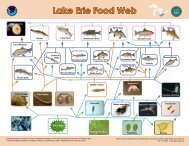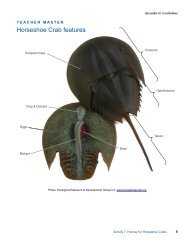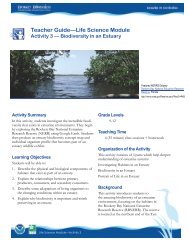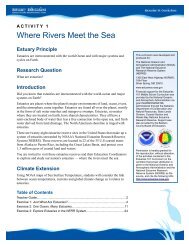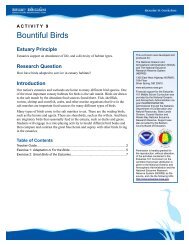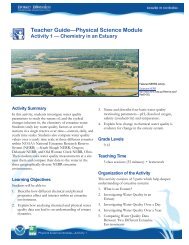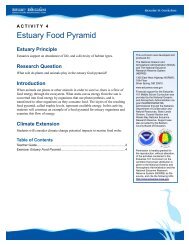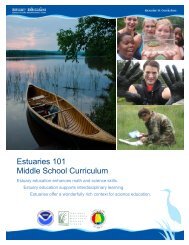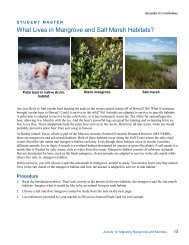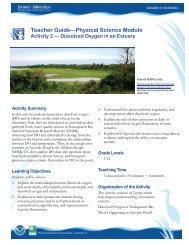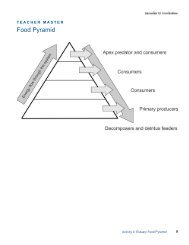The Great Oyster Mystery Teacher Guide - Estuaries NOAA
The Great Oyster Mystery Teacher Guide - Estuaries NOAA
The Great Oyster Mystery Teacher Guide - Estuaries NOAA
Create successful ePaper yourself
Turn your PDF publications into a flip-book with our unique Google optimized e-Paper software.
<strong>Teacher</strong> Preparation1. Download and view the presentation <strong>Oyster</strong> Recycling (available as a PDFdocument), on the web page for this activity.2. Download the image of the Mission-Aransas Estuary found on the web pagefor this activity.3. Copy Student Master: Clues in the Numbers, including the <strong>Oyster</strong> AbundanceGraphs.Procedures1. Show your students the presentation slideshow, <strong>Oyster</strong> Recycling, which youdownloaded from the web page for this activity on the Estuary Educationwebsite. This slideshow describes reasons why oysters are an importantestuary species and discusses threats to the oysters from both humans andother sources.2. Project the image of the Mission-Aransas Estuary found on the web page forthis activity. Point out the locations of Aransas Bay and Copano Bay withinthe Mission-Aransas Estuary. Also point out the locations where the Aransasand Mission rivers enter Copano Bay. Tell students that they are going tosolve a real life oyster mystery that happened several years ago in this estuary.Tell your students that the oyster population of both Aransas Bay and CopanoBay fell in 2007. Researchers and oyster farmers were worried. But in 2008,the oyster population rebounded significantly. Estuary researchers wanted toknow why this happened. Tell the students that Dr. Jennifer Pollack and herfellow researchers are asking them to join the hunt for answers. Your students’challenge is to try and solve this real-life oyster mystery and to suggestreasons why the oyster populations changed, using real data.3. Divide your students into teams of two to four students each. Students willwork in the same teams for all three exercises in this activity. Distributecopies of Student Master: Clues in the Numbers. This Master includes Young<strong>Oyster</strong> Abundance Graphs for both Aransas Bay and Copano Bay.4. Using the PDF file containing the Exercise 1 Masters, project the images ofthe young oyster abundance graphs from Aransas and Copano bays on ascreen. Review with your students how to read the bar graphs. Tell studentsthat the purpose of these graphs is to show changes in the numbers of youngoysters over time. Ask students if they can find the time period on the graph.Students should see that the horizontal axis of both graphs goes from January2007 to December 2008.5. Ask the students what they think the numbers on the vertical axis indicate.Based on the graphs, do they think the numbers represent all oysters or justyoung oysters? Do the numbers represent all young oysters in the entire bayor just an average of how many young oysters were found in one area?Student answers will vary. You should tell them that the researcher was onlycounting young oysters and reporting the average numbers found within alimited sample. So the bar graphs show the mean (average) number of youngoysters each month in samples taken from the Aransas and Copano bays.You'll find multimedia and otherresources on the web page forthis activity in the Middle SchoolCurriculum section of theEstuary Education website:http://estuaries.noaa.gov.Materials• Presentation: <strong>Oyster</strong>Recycling• Student Master: Clues in theNumbersActivity 11: <strong>The</strong> <strong>Great</strong> <strong>Oyster</strong> <strong>Mystery</strong> 5



